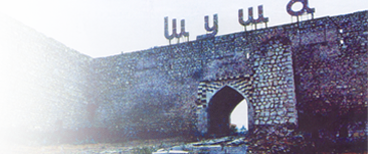 Today is the 17th anniversary of occupation of Azerbaijan’s districts of Fizuli and Jabrail by the armed forces of Armenia. On 23 August 1993, 51 villages and center of Fizuli district were seized by the Armenians, more than 55,000 inhabitants left their Native Land.
Today is the 17th anniversary of occupation of Azerbaijan’s districts of Fizuli and Jabrail by the armed forces of Armenia. On 23 August 1993, 51 villages and center of Fizuli district were seized by the Armenians, more than 55,000 inhabitants left their Native Land.
Fizuli district covers the territory from the southeastern slopes of Karabakh Mountain range to Araz River. It is border with Azerbaijani regions of Khojavand, Jabrail, Agjabadi, Beylagan and Iran along Araz River.
The territory of the Fizuli district is 1386 sq.km, the population is approximately 105,000 people. Some 13 settlements and 20 villages are located on the territory of district, freed from the occupation. Twelve of the settlements are constructed after release, and the families of internally displaced persons have been temporarily placed there. At present 51,000 IDPs reside on the territory.
Beginning from 1988, the Fizuli region is a subject to the constant attacks of the Armenians. As a result of occupation, more than 1,100 inhabitants of Fizuli became martyrs, 113 – were taken prisoner, 1,450 people obtained disablement.
As a result the seizure of Jabrail region, of which territory is 1,050 sq.km, 72 secondary school buildings, eight hospitals, five mosques, two museums, 129 historical monuments, 149 cultural centers left in the occupation.
61100 IDPs from the Jabrail region settled in more than 2,000 habitable points in 58 regions of the country.
The natural resources of the Azerbaijani Fizuli region occupied by Armenia are destroyed, the Azerbaijani Ecology and Natural Resources Ministry reported on Saturday.
The ministry’s operations section supervising the devastating effects to the environment and natural resources in the occupied territories of Azerbaijan has identified a number of facts of destruction of natural resources by Armenians in the Fizuli region in the occupation period. Armenians cut down all the trees in the Dovlatyarli village located in a forest zone, destroyed green spaces along the roads in the Gochahmadli and Yaglivand villages, and burned more than 35,000 hectares of land in 2006-2009.
Trend

